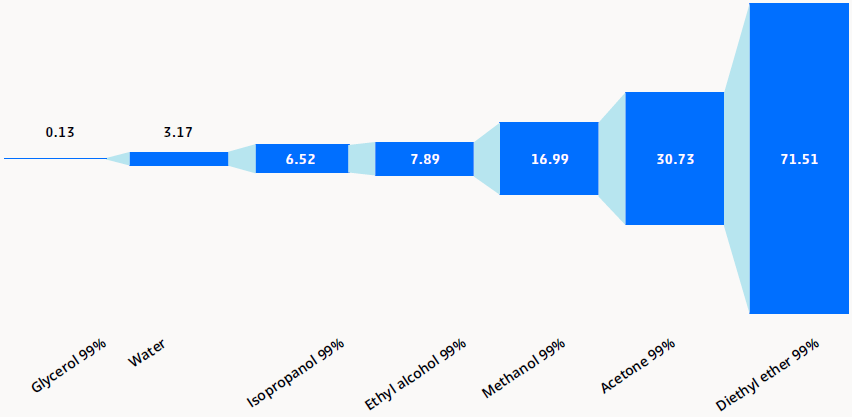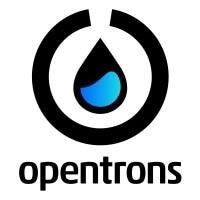Produced in Partnership with OpentronsApr 3 2024Reviewed by Louis Castel
Volatile liquids evaporate quickly at room temperature and are frequently used in a variety of ways as reagents. Ethanol, acetone, methanol, and isopropanol are utilized in numerous applications for nucleic acid purification.1 When temperatures are increased, the volatility rate (or rate of evaporation) rises exponentially.2
Even at room temperature, volatile liquids are difficult to pipette due to the frequent issue of them dripping out of the tip. Pipetting volatile liquids presents challenges due to their constant evaporation. Higher vapor pressure accelerates the evaporation process, leading to quicker expulsion of the liquid from the pipette tip.
Elevating the temperatures in volatile liquids raises the volatility and the rate of evaporation and vapor pressure. In contrast, diluting the liquid will decrease the volatility and related features.
In this article, different liquid handling optimizations will be explored for commonly automated volatile liquids, including various dilutions of ethanol and isopropanol.
Key Volatile Liquid Handling Techniques
Pre-Wetting Tips mix()
Pre-wetting is a pipetting technique that is used to repeatedly aspirate and dispense a defined volume of liquid that will be aspirated. The high vapor pressure of volatile liquids causes the air gap between the nozzle and the liquid surface to expand, forcing them to drip out of the tip.
Pre-wetting helps by saturating the vaporized solvents within the air gap, effectively lowering the vapor pressure and stabilizing the liquid within the pipette tip.

Figure 1. TVapor pressure (kPa) of commonly used volatile liquids at 25 ˚C. Image Credit: Opentrons
Trailing Air Gap aspirate() and Tip Withdrawal Speed move_to()
Air can be present at the tip opening to prevent spillage. This air gap is reliant on the liquid’s vapor pressure and the amount of liquid aspirated. The time required for the tip to relocate from the aspirated deck to the dispensing position is critical. The majority of volatile liquids have a lower density than water (<997 kg/ m3).
When air is aspirated after the volatile liquid aspiration, the liquid inside the tip advances rapidly upwards, potentially clogging the filter or pipette nozzle. To prevent this, the trailing air gap flow rate speed is kept extremely low.
Liquids that exhibit a high vapor pressure, such as acetone and diethyl ether, may demonstrate a noticeable 'tears of wine' effect.5 This phenomenon occurs as rings of liquid move through the trailing air gap, creating a void between the aspirated liquid and the liquid at the opening. This increases the likelihood of dripping from the pipette tip.
Post-dispense Delay protocol.delay()
There are two vital factors for precisely dispensing volatile liquids. First, lower surface tension causes the liquid to adhere to the inside of the tip and then move slowly toward the tip opening after dispensing the remaining liquid.
Second, the alcohol rings or ‘wine tears’ result in liquid adhering above the liquid surface and then slipping towards the tip opening, resulting in dead volume. A post-dispense delay will reduce the dead volume.
Double Blowout blow_out()
A second blowout can achieve full dispensing. To complete a second blow out, 1 µL of air is aspirated by removing the tip from the liquid. The second blow out can be performed in or out of liquid. Aspiration of 1 µL air permits the plunger to keep its original positioning with only a minor adjustment.
About Opentrons
Today, biologists spend too much time pipetting by hand. We think biologists should have robots to do pipetting for them. People doing science should be free of tedious benchwork and repetitive stress injuries. They should be able to spend their time designing experiments and analyzing data. That's why we started Opentrons.
We make robots for biologists. Our mission is to provide the scientific community with a common platform to easily share protocols and reproduce each other's results. Our robots automate experiments that would otherwise be done by hand, allowing our community to spend more time pursuing answers to some of the 21st century’s most important questions.
Sponsored Content Policy: News-Medical.net publishes articles and related content that may be derived from sources where we have existing commercial relationships, provided such content adds value to the core editorial ethos of News-Medical.Net which is to educate and inform site visitors interested in medical research, science, medical devices and treatments.